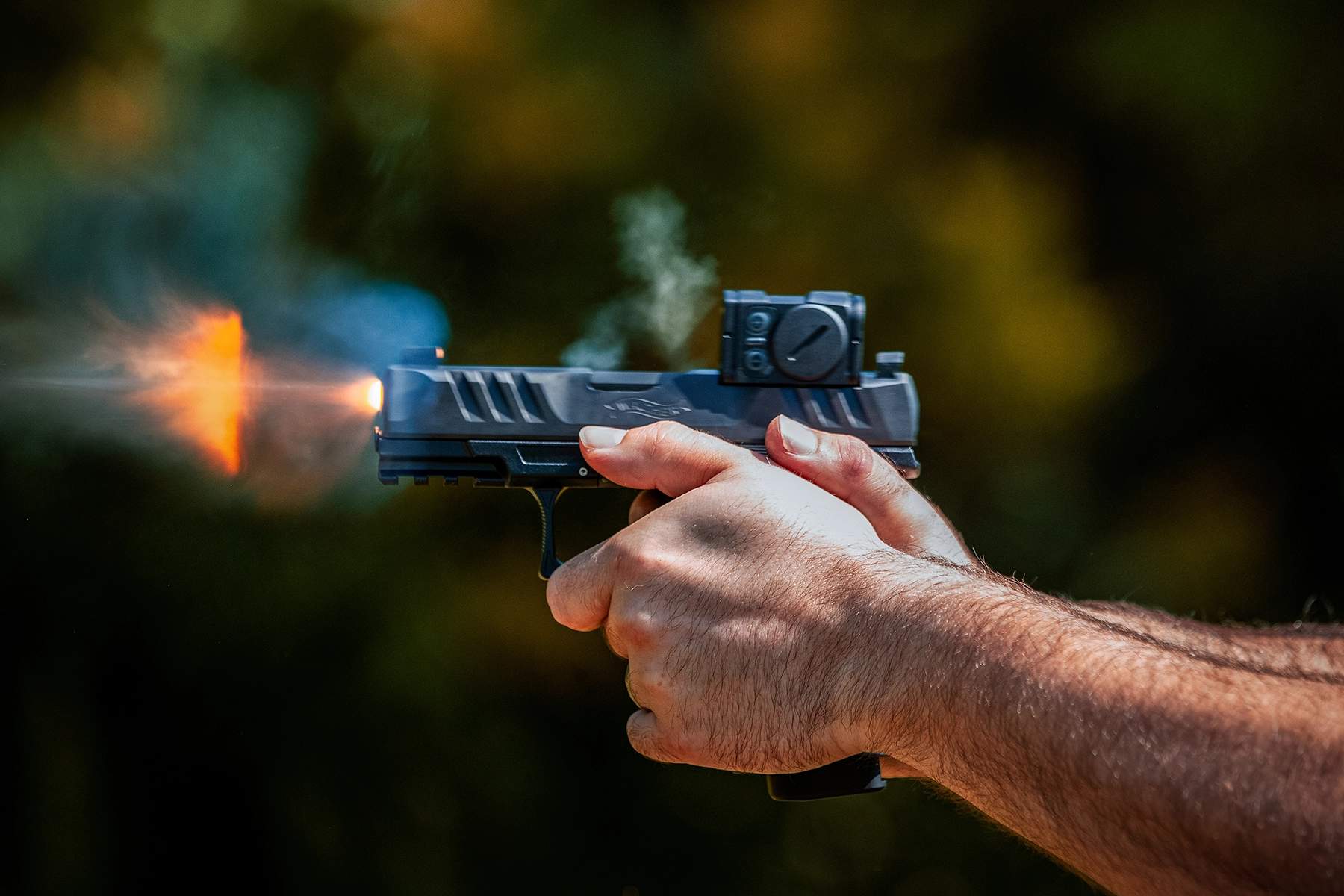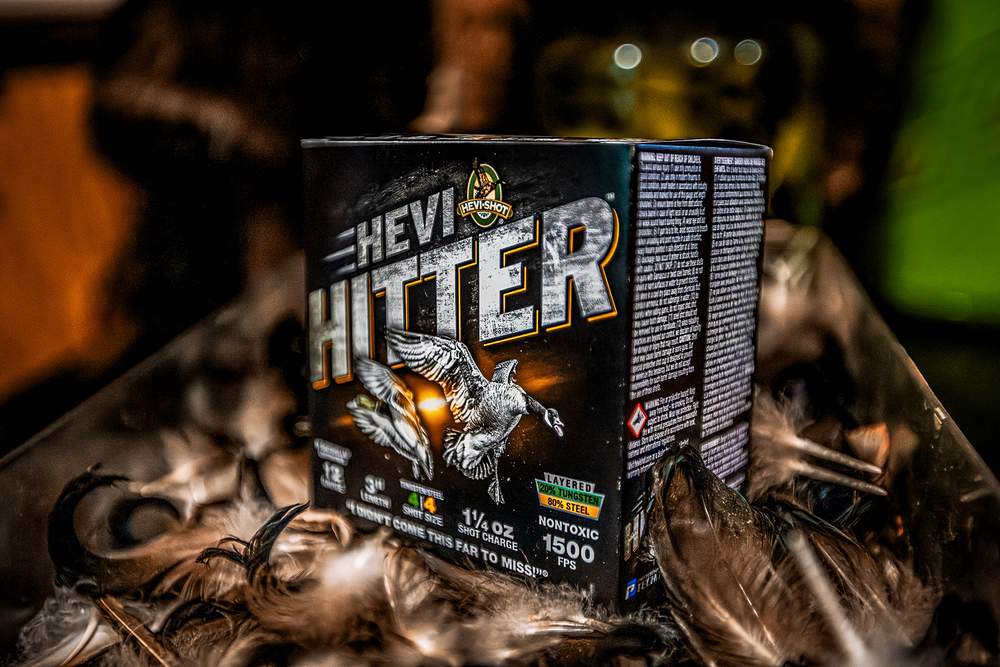Walther has been releasing a string of hits lately with the introduction of different variants in its PDP series of pistols. The latest release was showcased at the 2025 SHOT Show: the PDP F Pro ACRO, and it has a few things going on that separates it from your run-of-the-mill PDP.
Walther PDP F-Series Pro Features
The PDP F handgun platform has all of the essential features of the standard PDP; the one major difference is the grip. The PDP has a larger and curvier grip that fills the hand of the average shooter and offers fantastic ergonomics, while the PDP F offers a slimmer, more conventional grip that’s easier for people with smaller hands to hold comfortably and securely. The redesigned grip also provides a shorter trigger reach. As good as the original PDP grip is, I’m pretty sure I like the new F grip just as well.
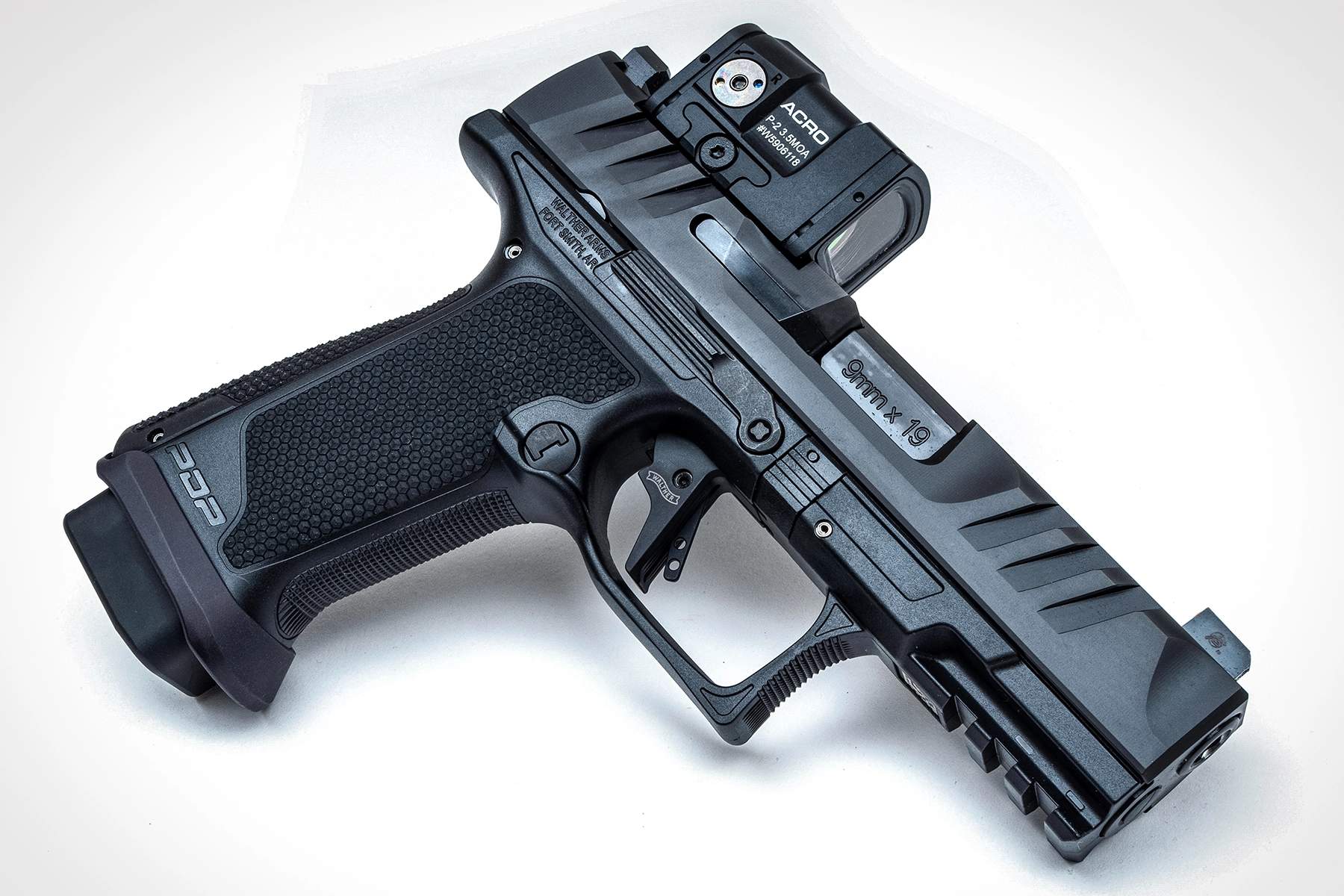
The PDP F pistols use a two-piece striker assembly, unlike the standard PDP, that makes the slide up to 20% easier to cycle, meaning smaller-statured people and those with less hand strength will find it easier to run the PDP F.
It should be noted that the F-Series pistols are extremely modular; users can put any slide on any frame from the various pistols sizes within the line, allowing for some interesting builds.
Features that carried over from the base PDP to the F-Series include: a Picatinny rail for accessories, excellent grip texturing, super-aggressive slide serrations at the front and rear of the slide for easy manipulation, and an oversized trigger guard for use with gloved hands. Naturally, the PDP F is also optics-ready with improved machining in the slide that helps buffer recoil forces from essentially any direction. It also includes a hearty nitride finish, a reversible push-button magazine release, and an ambidextrous slide stop.
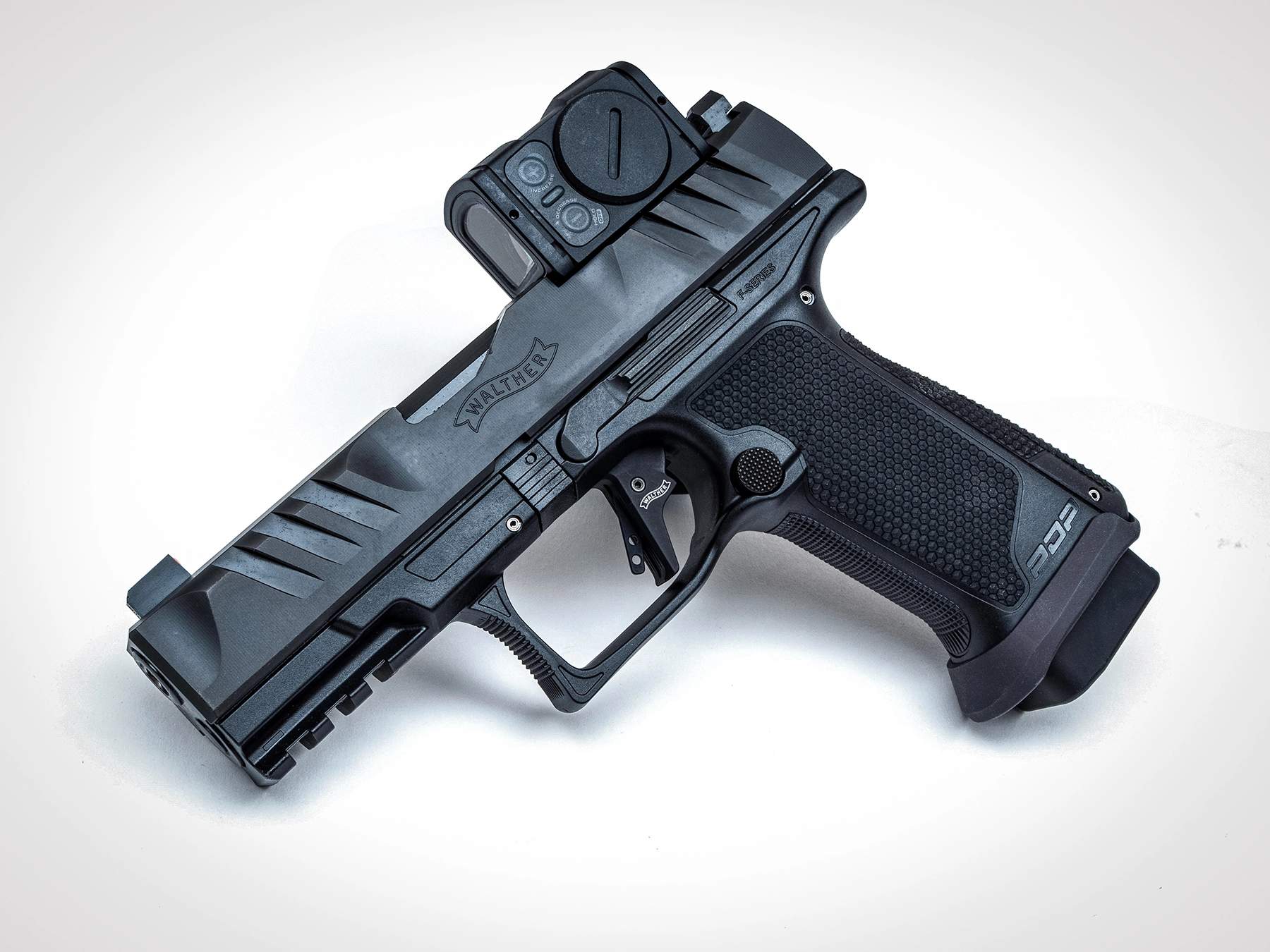
The Walther PDP F-Series Goes Pro
With an already stellar PDP F-Series platform as a base, the PDP F Pro model takes the enhancements even further to provide a high-speed system that can be employed either in duty use or for the adept consumer that wants that extra edge.
The first, and maybe the most important feature, is the introduction of the Dynamic Performance Trigger. The DPT offers a slightly lighter pull than the standard PDP trigger along with a crisper, more authoritative break after the wall.
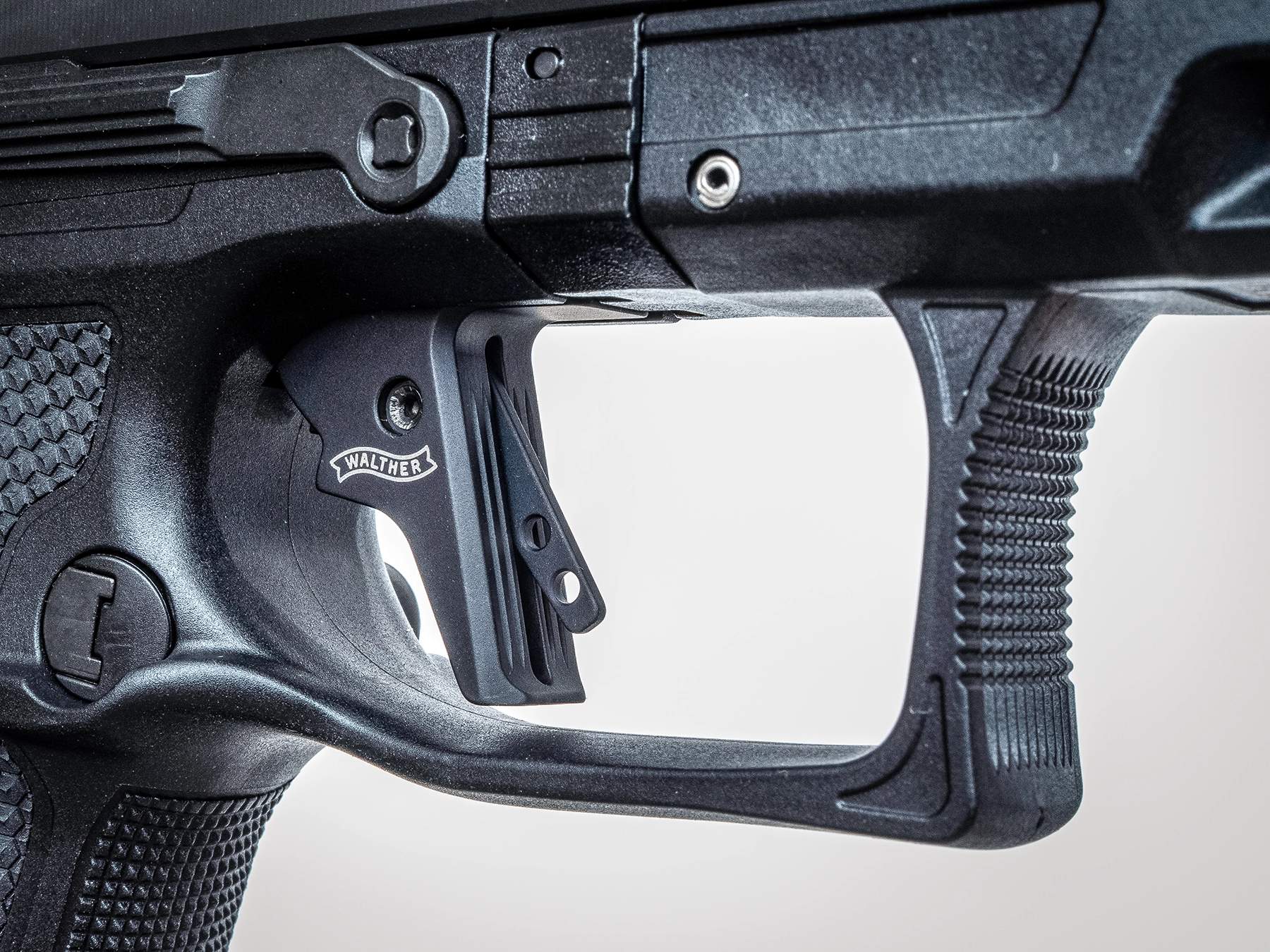
The review pistol I tested registered an average trigger-break weight of 5.07 pounds. That’s certainly not the lightest trigger pull going, but for a striker-fired defensive pistol, it makes complete sense not to be sitting on a hair trigger when things go south. The reset is also not the shortest I’ve experienced, but it’s short enough that I don’t think it’s going to slow down anyone trying to get quick follow-up shots.
There are a couple of other upgrades that distinguish the “Pro” line from the standard models. One is the inclusion of an aluminum magazine well that’s affixed to facilitate faster reloads. The other is the use of extended, aluminum baseplates on the magazines to ensure they drop free quickly, also speeding up the reload process overall.
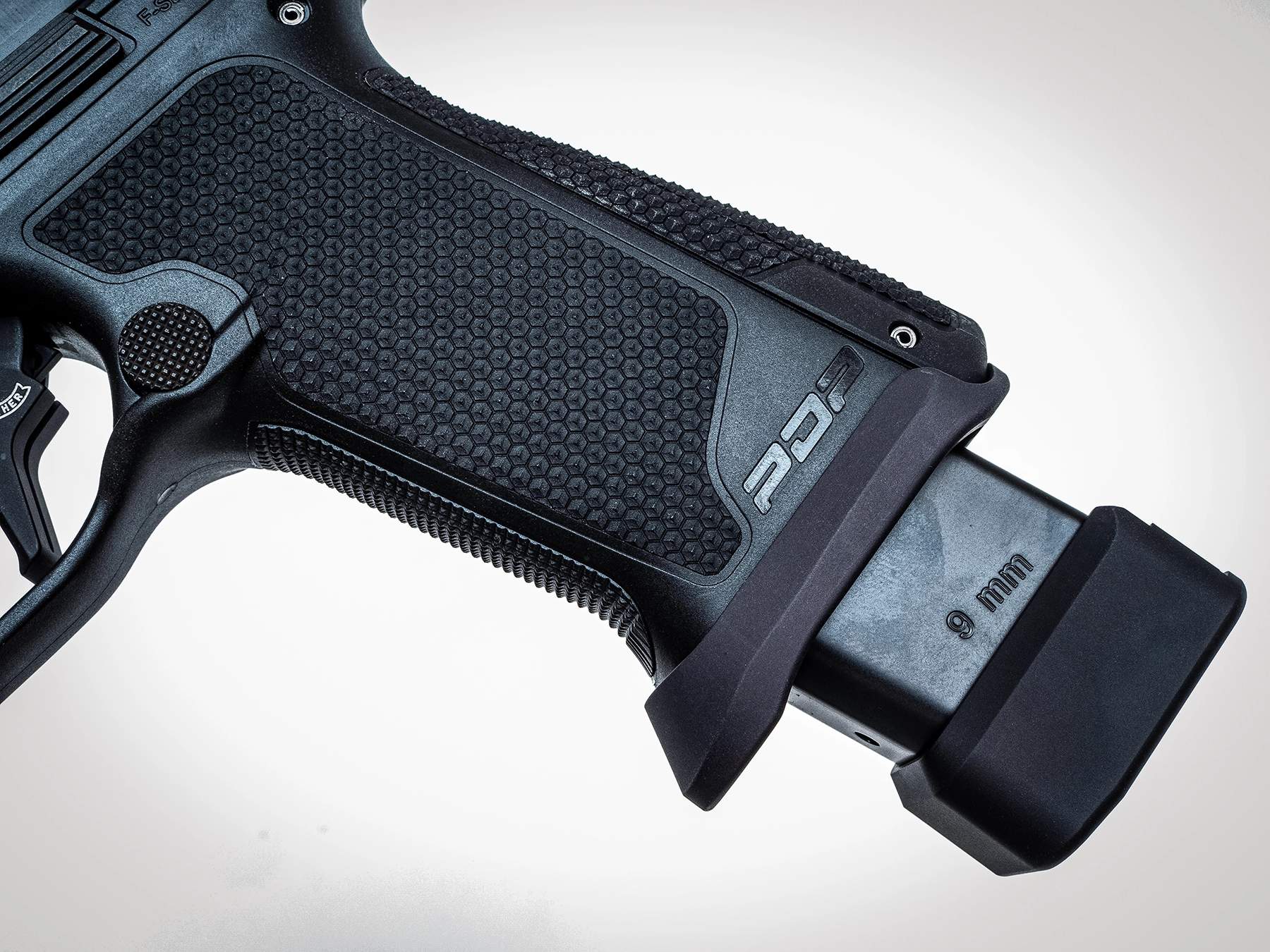
Enter the Aimpoint ACRO
One of my very favorite firearms accessories to come out in the last several years is the Aimpoint ACRO P2 red-dot reflex sight. Before the ACRO, Aimpoint was already highly regarded for its line of its optics due to their rugged build quality, extra-long battery life, and the quality of its optics. The company turned the firearms industry on its head with the market’s first fully enclosed emitter design.
An open emitter projects the dot on the glass, but it is not shielded and is susceptible to dirt, rain, dust and debris getting into the unit and blocking the emitter. An enclosed-emitter design eliminates the possibility of blockage, and at most, the user might have to just wipe off the glass for better visibility, depending on environmental conditions.
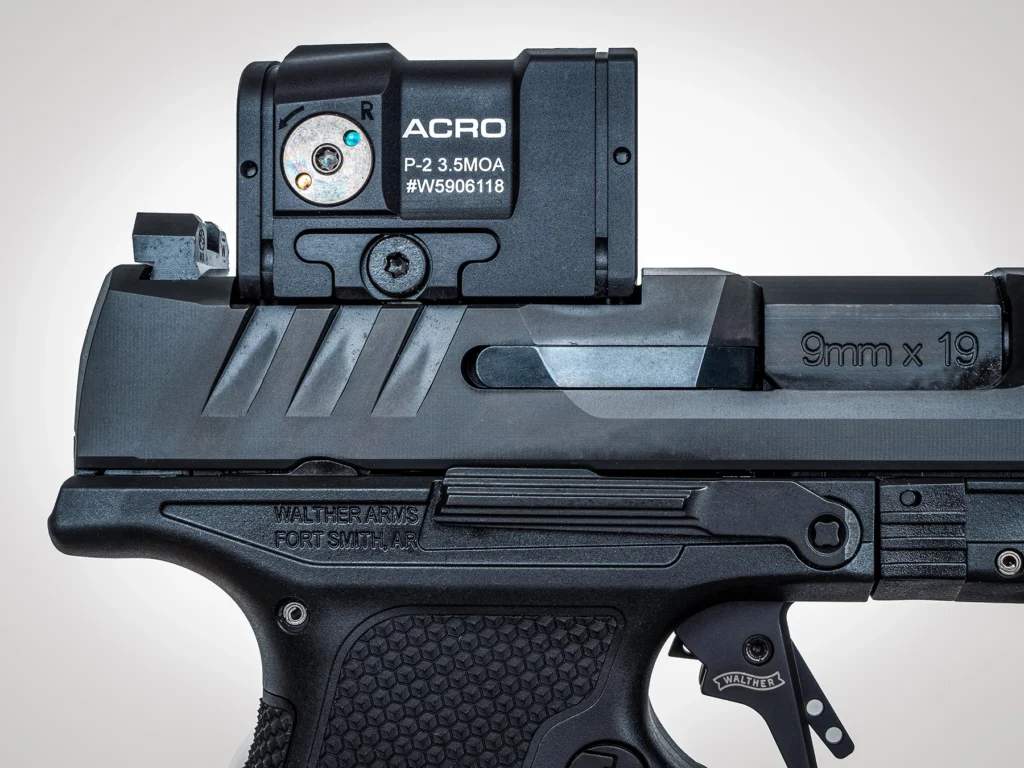
The new Walther PDP F Pro ACRO is machined to allow the ACRO P2 to be directly mounted to the PDP F Pro’s slide with no adapter plate in between.
The ACRO P2 has a rugged aluminum housing, hardened glass up front and in the back, is submersible to up to 135 feet, offers four night-vision settings and six daylight settings, and yields up to 50,000 hours of battery life on daylight setting 6. That’s around five years of continuous operation.
Even better, after those five years are up, the CR2032 battery can easily be replaced on the side of the unit without removing it from the gun and ruining your zero. Buttons on the side act as the power switch and allow the user to change the brightness level of the 3.5-MOA dot.

Windage and elevation are adjusted via dials on top and on the right side with one click equaling 0.7 inches at 1,000 yards. Those dials don’t have a standard flat slot that you can manipulate with a screwdriver, coin, or other similar item.; they require a very specific tool provided by Aimpoint to make adjustments. If you don’t have the tool on you when you get to the range, well, you’re out of luck. But given how awesome every other aspect of the ACRO P2 is, I guess I can bury that one minor quibble with the unit.
The Walther PDP F-Series Pro ACRO: Range Test
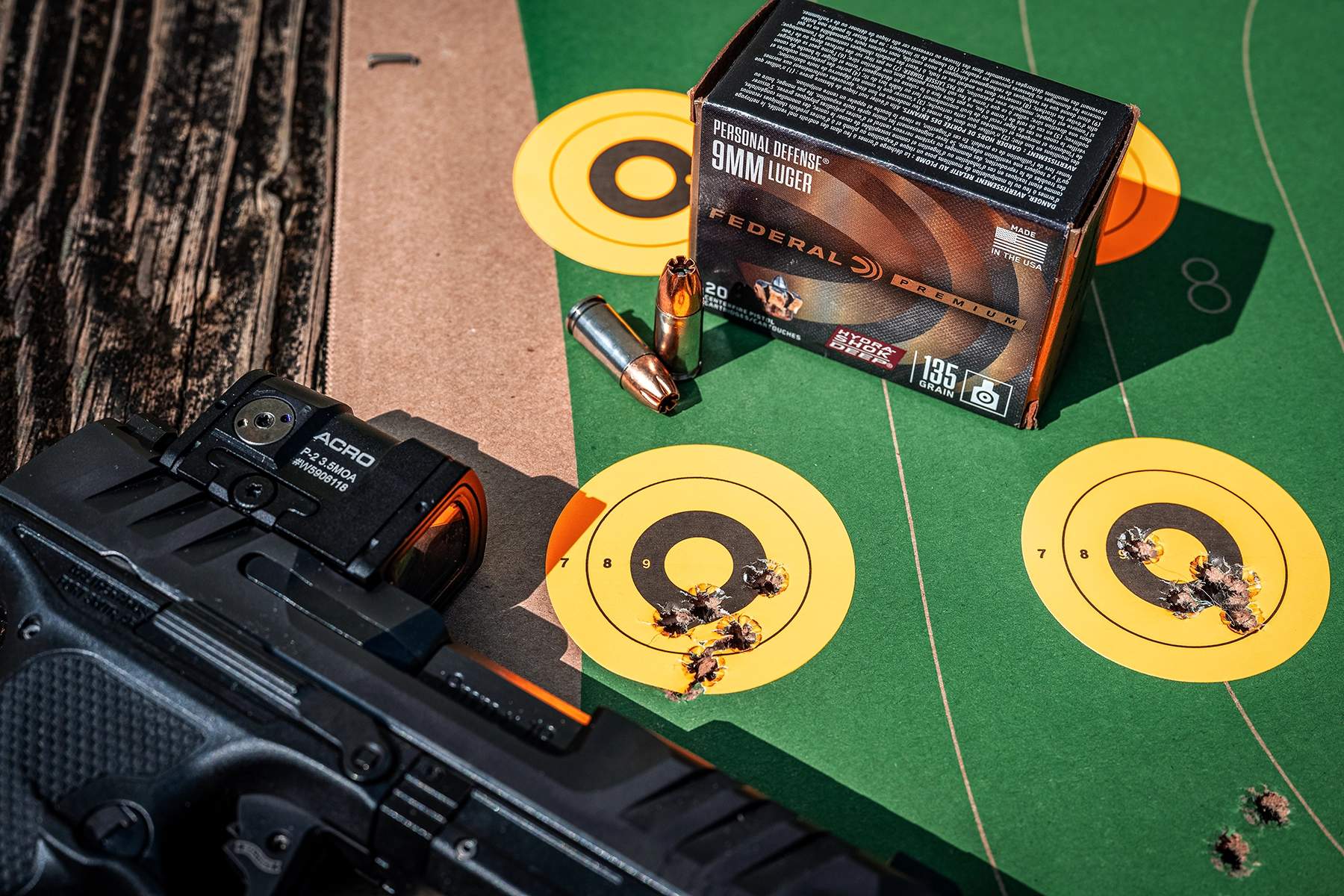
Having reviewed close to 10 different Walther PDP models, I didn’t come across any surprises with the new PDP F Pro ACRO when I and a few friends tried it out at the range.
The PDP F Pro has already been around for a hot minute, and the main addition is the ACRO P2 directly mounted at the factory. Even so, we put the new version through its paces just the same to make sure everything was up to snuff.
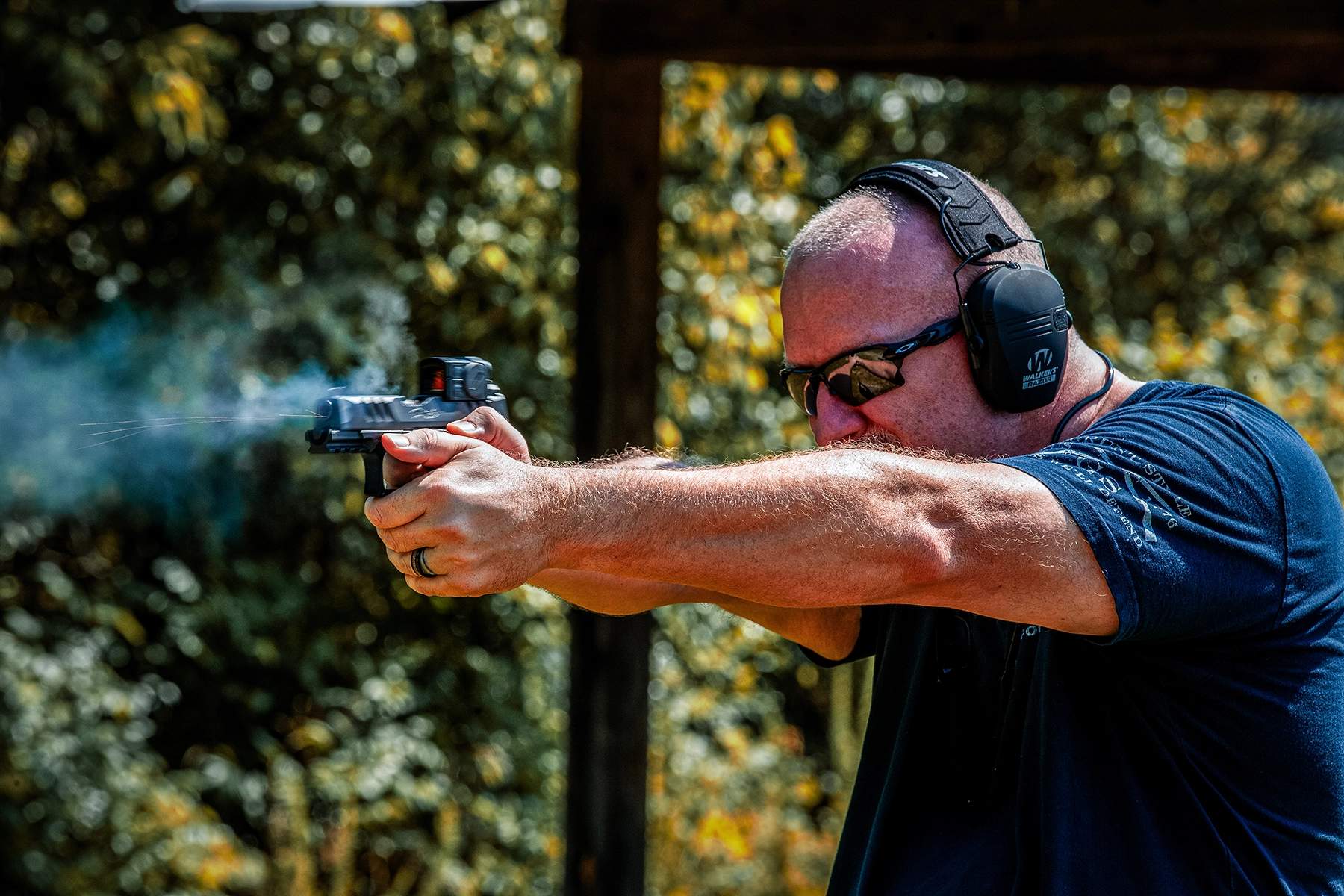
Walther PDP F Pro ACRO Range Results
(Three, five-shot groups shot at 15 yards)
| Ammo | Accuracy | Velocity (fps) |
|---|---|---|
| Federal 135gr. Hydra-Shok Deep | Avg: 1.18” Best: 1.06” | 1,132 |
| Hornady 115gr. Critical Defense | Avg: 2.17” Best: 1.5” | 995 |
| Remington 147gr. Gold Saber Bonded | Avg: 1.02” Best: 0.94” | 934 |
Trigger
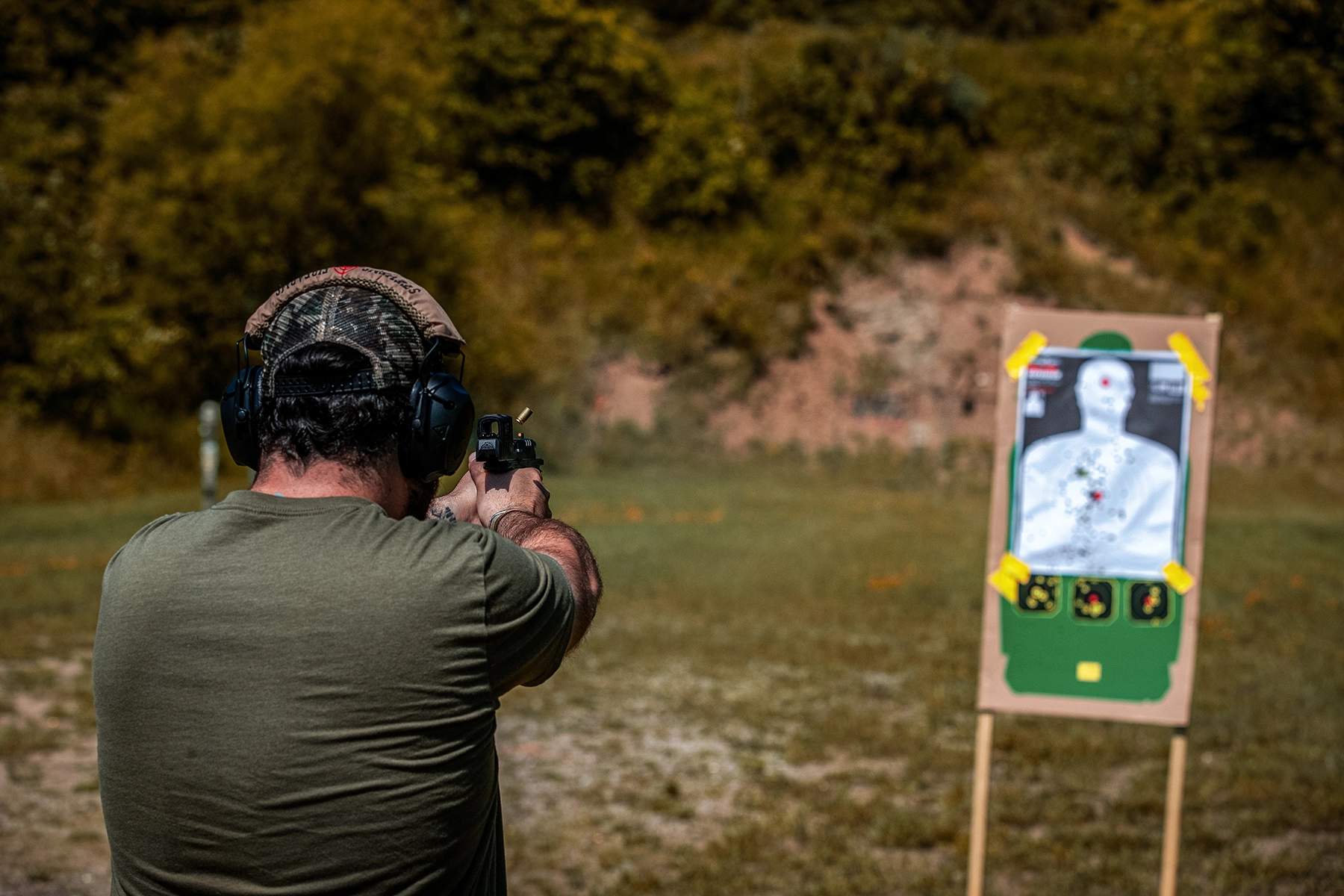
As mentioned, the trigger has a break of around 5 pounds and that is a little heavier than the non-F models I’ve tried in the past with the Dynamic Performance trigger. For example, looking back at my test data, a PDP Pro SD I reviewed had a trigger-pull weight of 3.85 pounds.
I don’t know if some changes had to be made to the trigger geometry due to the slimmer grip, but there’s definitely a difference. Even so, as I mentioned, a 5-pound trigger is probably just about perfect for a defensive pistol.
Accuracy
As expected, the accuracy of the PDP F Pro ACRO was on point. I tested it on targets at 15 yards. For all groups with three different loads, it averaged 1.02 inches. The pistol produced two single-best groups measuring just 0.88 inches with Federal 135-grain Hydra-Shok Deep ammo; the three-group average was an impressive 0.90 inches.
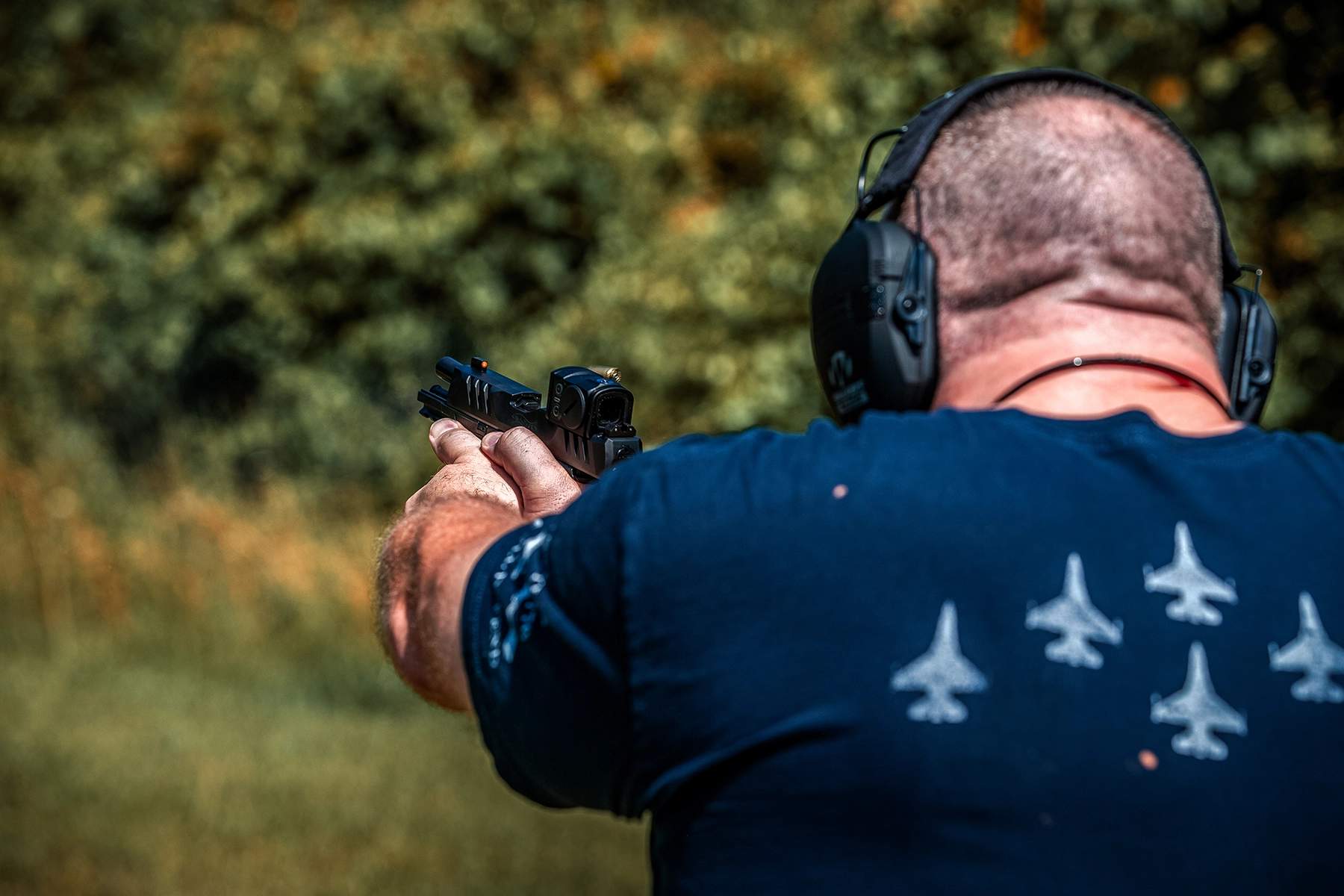
Remain Firm
It’s worth noting that the PDP F Pro ACRO seemed to be a little more susceptible to limp-wristing than other striker-fired pistols I’ve used. I usually like to have a more relaxed grip on a pistol when I’m shooting groups because I don’t want a lot of tension on the gun making the red dot vibrate back and forth needlessly. Well, when I tried that, the pistol did not go back into battery on several occasions. Another shooter in our group, Ashley, experienced the same thing on the firing line.
I theorize this might be related to the striker mechanism that makes the slide easier to rack, or the additional mass of the ACRO P2 on the slide, or both. When we made sure to keep wrists and grips firm, that hiccup was corrected. Otherwise, the Walther PDP F Pro ACRO’s reliability was perfect through nearly 500 rounds of various ammunition types.
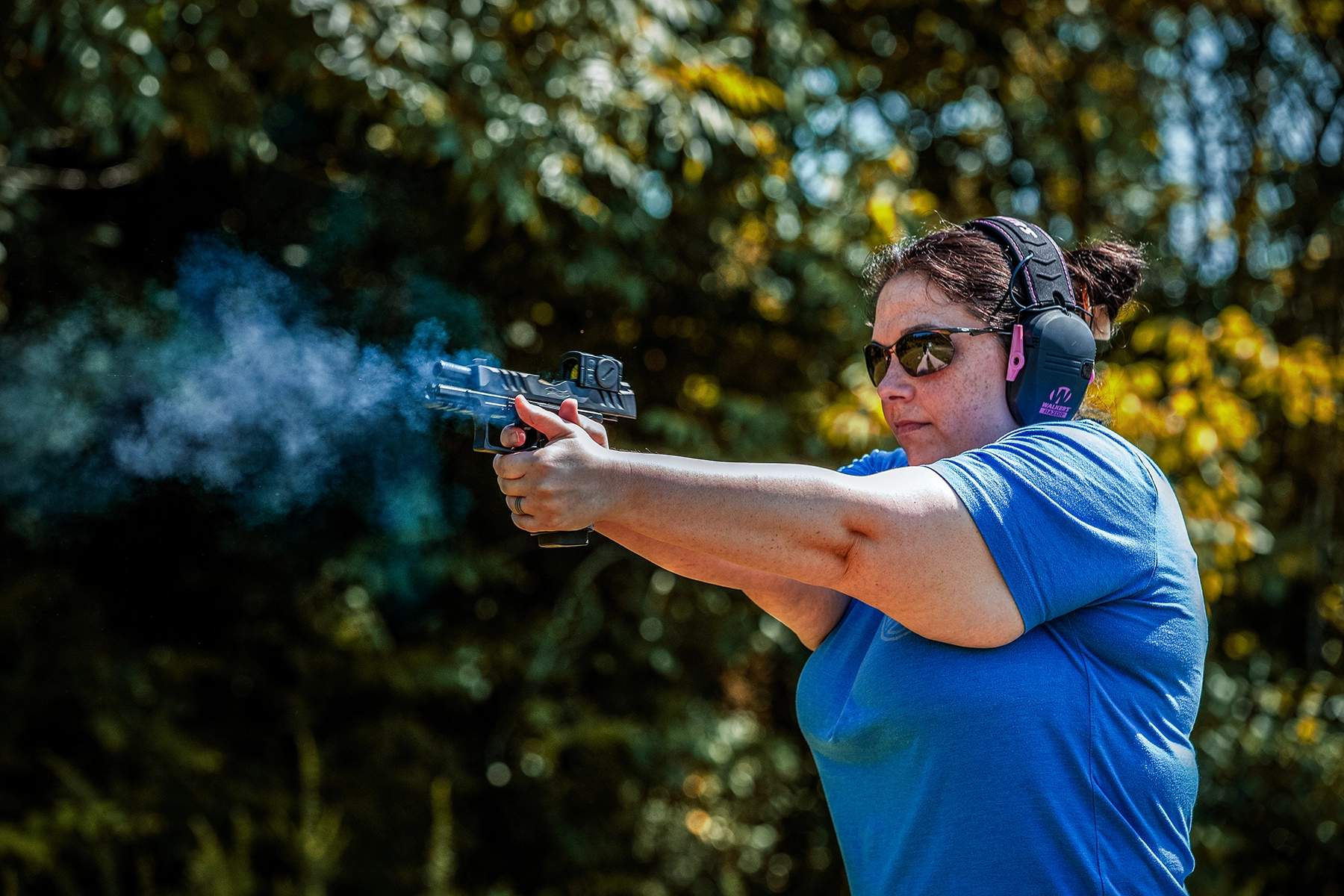
Good Feel and Good Sights
The folks at the range with me really liked the PDP F Pro ACRO for a variety of reasons. Ashley said she liked the grip texturing, and she really liked the trigger pull. In fact, she preferred the Walther over any other pistol we had on the range that day.
Jamie and Addison said the PDP F Pro ACRO was to shoot, and Jamie particularly liked that there was still room for his larger hand with the grip’s flared magwell.
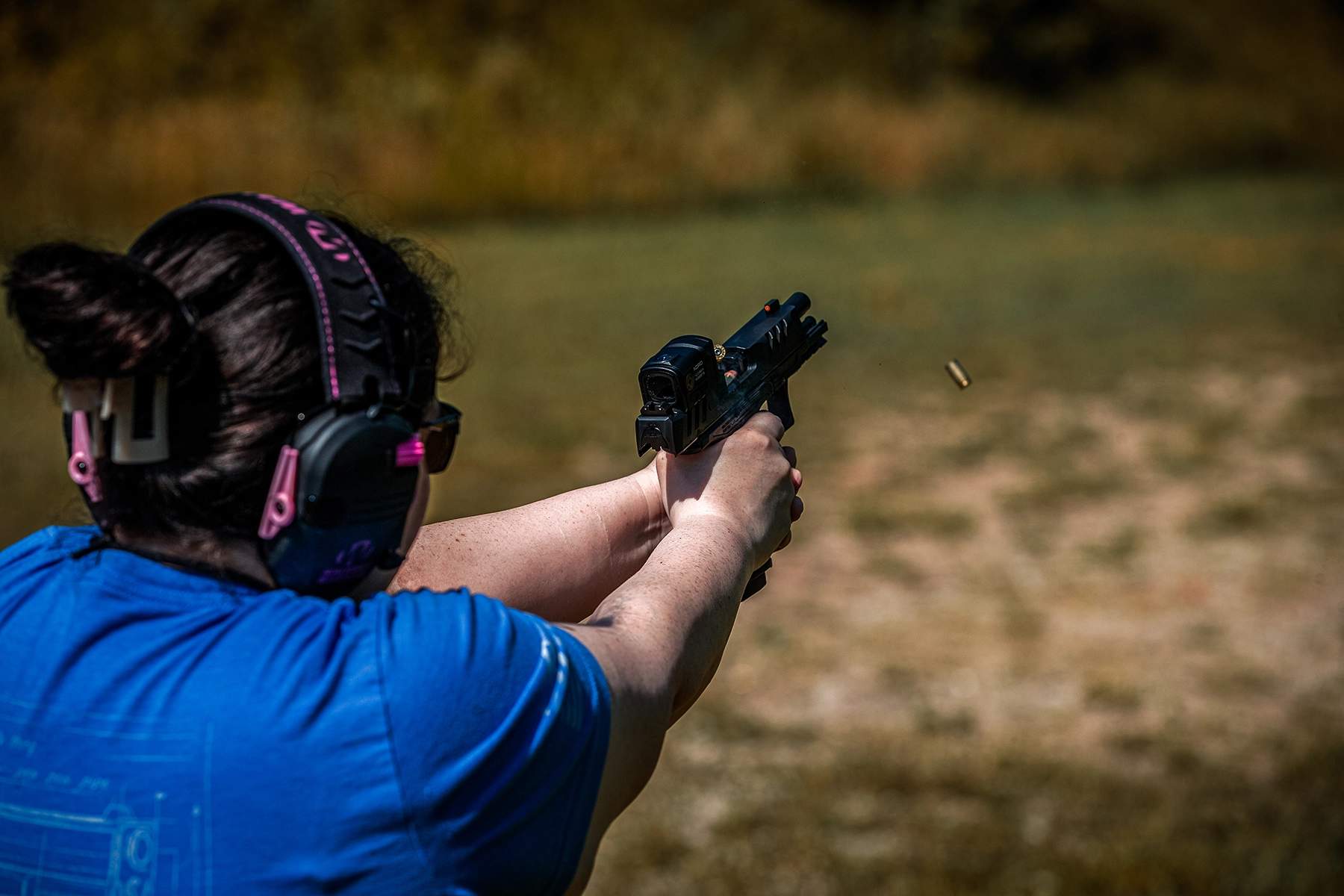
I liked all of those points as well, and I was specifically glad about the high-visibility front sight with the tritium insert and the tritium inserts on the rear sight. The high-viz front sight really popped in the ACRO’s window with the lower one-third co-witness. These are the first good set of sights I’ve seen on a PDP from the factory.
Walther PDP F Pro ACRO: Final Verdict
There are all kinds of great things to love about the new PDP F Pro ACRO from the ergos to the accuracy to the extra touches with the mag well and the aluminum magazine baseplates. This new Walther is about a perfect defensive pistol as you can get for the home, and with all the enhancements in place, such as the ACRO, you don’t have to do a thing to it after you take it out of the box.
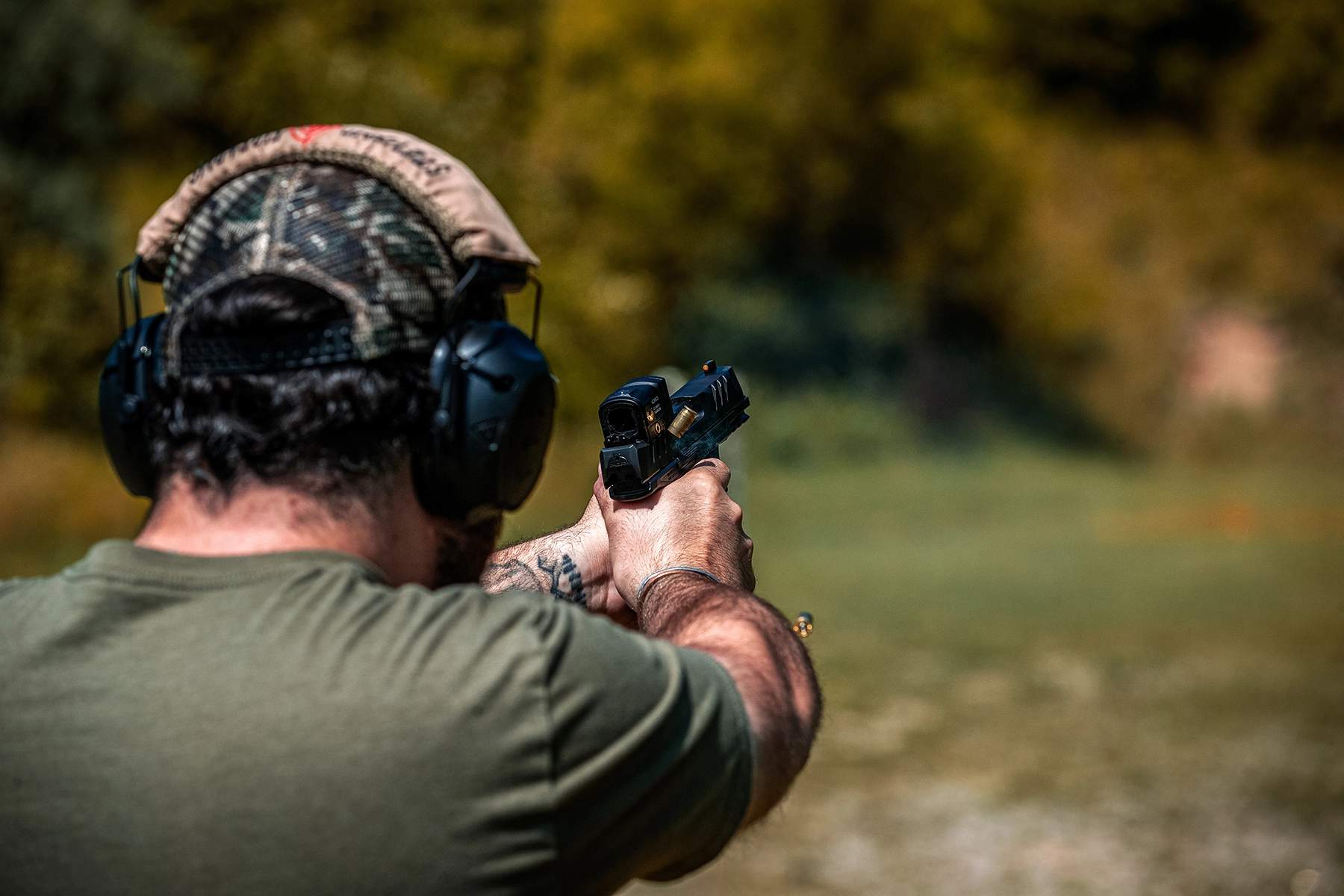
The MSRP of $1749 may seem a little high for a standard pistol, but don’t pay attention to that too much. This isn’t a standard pistol and I’ve already seen them for sale for $1249 and in one case, less than $1100.
When you consider everything that comes with this pistol, like the “Pro” package add-ons and especially the top-tier Aimpoint P2 ACRO, it is definitely well worth the price of admission when you shop around and find the right price.
Walther PDP F Pro ACRO: Specifications
Action: Semi-Automatic
Barrel: 4 inches
Overall Length: 7.25 inches
Caliber: 9mm
Capacity: 18+1
Finish: Nitride
Weight: 24 ounces
Sights: High-Viz Front w/3 tritium inserts
Optic Ready: Yes
Grips: Polymer
MSRP: $1,749
